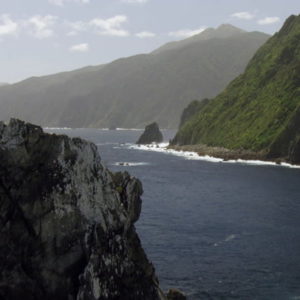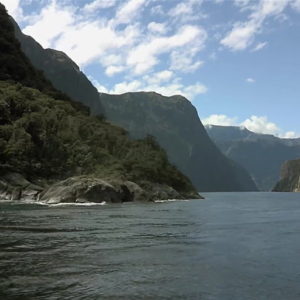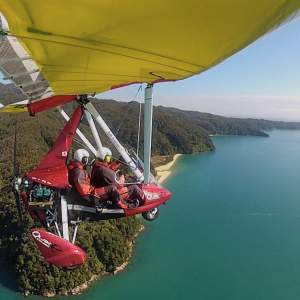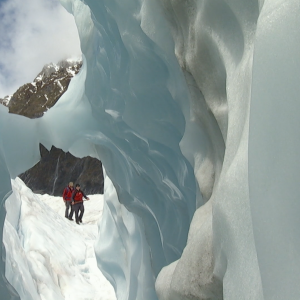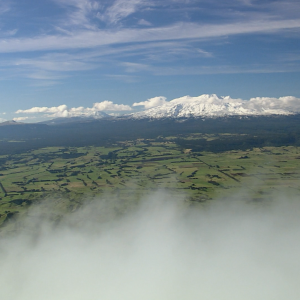Tongariro and Whanganui
In this episode, Gus makes his way to the Central North Island of New Zealand, a vast desert-like landscape known as the central volcanic plateau. Rising from this unique geology is the commanding presence of three volcanic mountains–Ruapehu, Ngauruhoe, and Tongariro, while at their foothills lie the upper reaches of the spectacular Whanganui River.
In this episode, Gus visits New Zealand’s first conservation park–the world’s fourth–Tongariro National Park. The history of the creation of the park is controversial and Gus starts his exploration by delving into the history and myths of the park created 125 years ago.
The mountains of Tongariro were created by powerful forces of nature. Beneath the surface, the earth is very much alive–just 16 kilometres down, two giant tectonic plates grind and clash against one another. Still further below, molten rock meets with water and volatile gases, both desperate to escape and burst through the earth’s shallow crust.
This landscape is a ticking geological time-bomb, to which almost one million people visit each year. Gus makes his way over the 20 kilometre Tongariro alpine crossing, through one of the most active volcanic zones in the world, and the most popular day walk in New Zealand.
He meets the specialists who are daily monitoring these volcanic areas, managing the risk of having so many people right on top of the activity every day all year long.
The crater lake on Mt Ruapehu caused a lahar which killed 150 people in 1953, yet today New Zealand’s largest ski area is just 500m away.
Gus catches up with a ski patroller whose job is to prepare people for the possibility of an eruption. And it’s not just volcanoes making this a challenging environment to work in. The ski fields battle against ice formations which grow as fast as 10cm an hour and can collapse ski lifts under their weight.
From the roof of this extreme and volatile landscape to the desert-like lowland, forces of nature have had a profound effect on this volcanic plateau. A massive eruption 1800 years ago created Lake Taupo and incinerated the north facing forests, but the south-west neighbouring forest of the Whanganui National Park were sheltered from the fallout.
Gus takes to his bicycle to explore this park, on the Mountain to Sea Cycleway. The ride is split into two by the mighty Whanganui River; the longest navigable river in New Zealand beginning on the flank of Tongariro and winding its way to the Tasman sea.
Forests alongside are a haven for native species such as the Kiwi, but introduced pests are a constant problem, as Gus learns while hunting wild pigs.
Off his bike, Gus continues his park journey on the river by canoe and rubber tube while investigating an innovative high-tech solution to monitoring kiwi across 160,000ha of rugged terrain. He also catches a glimpse of one of the 80 endangered Whio, or blue duck, which live on a 30km stretch of protected river way.
While these two national parks together provide one of the most unique and volatile playgrounds in New Zealand, their untamed landscapes also offer the perfect environment for some of our most endangered species.






